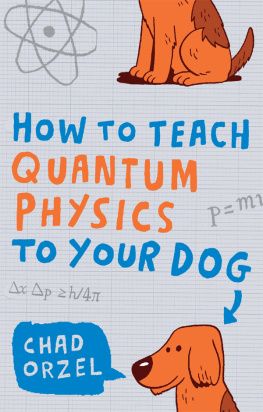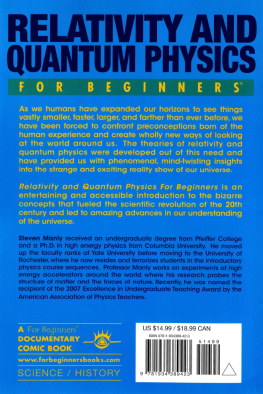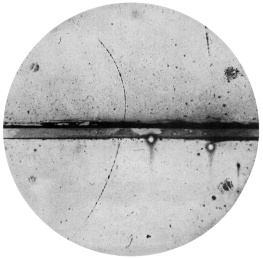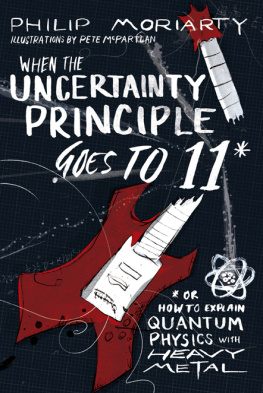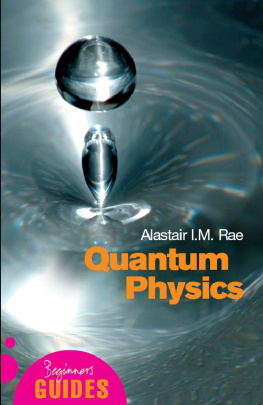How to Teach Quantum Physics
to Your Dog
Charming. A light-hearted and amusing way to learn about one of the most important aspects of modern science.
William D. Phillips Nobel Laureate in Physics
A fast-moving and fun introduction to some of the deepest mysteries of modern physics. And Emmy is a star.
Dr Sean Carroll author of From Eternity to Here:
The Quest for the Ultimate Theory of Time
Quantum entanglement, quantum teleportation, and virtual particles are all explained with the authors characteristic light-hearted touch. Readers whove shied away from popular treatments of physics in the past may find his cheerful discussion a real treat.
Publishers Weekly
About the Author
Chad Orzel is an Associate Professor in the Department of Physics and Astronomy at Union College, New York, where he carries out research in the field of Atomic, Molecular, and Optical Physics. His influential and award-winning blog can be found at http://scienceblogs.com/principles/.
HOW TO TEACH
QUANTUM PHYSICS
TO YOUR DOG
CHAD ORZEL
A Oneworld Book
First published in Great Britain and the Commonwealth
by Oneworld Publications 2010
Reprinted 2010, 2011
This ebook edition published by Oneworld Publications 2011
First published in North America by Scribner, a division of
Simon & Schuster, Inc. 2009
Copyright Chad Orzel 2010
The moral rights of Chad Orzel to be identified as the author of this work have been asserted by him in accordance with the Copyright, Designs and Patents Act 1988
All Rights reserved
Copyright under Berne Convention
A CIP record for this title is available from the British Library
ISBN 978-1-85168-779-4
eBook ISBN 978-1-78074-096-6
Typeset by Glyph International, Bangalore, India
Cover Design by vaguelymemorable.com
Cover illustrations by Scott Garrett
Oneworld Publications
185 Banbury Road
Oxford OX2 7AR
England
Learn more about Oneworld. Join our mailing list to find out about our latest titles and special offers at: www.oneworld-publications.com
To Kate, whose laugh started the whole thing
INTRODUCTION
Why Talk to Your Dog about Physics?
An Introduction to Quantum Physics
The Mohawk-Hudson Humane Society has set up a little path through the woods near their facility outside Troy, so you can take a walk with a dog youre thinking of adopting. Theres a bench on the side of the path in a small clearing, and I sit down to look at the dog Ive taken out.
She sits down next to the bench, and pokes my hand with her nose, so I scratch behind her ears. My wife and I have looked at loads of dogs together, but Kate had to work, so Ive been dispatched to pick out a dog by myself. This one seems like a good fit.
Shes a year-old mixed-breed dog, German shepherd and something else. Shes got the classic shepherd black and tan coloring, but shes small for a shepherd, and has floppy ears. The tag on her kennel door gave her name as Princess, but that doesnt seem appropriate.
What do you think, girl? I ask. What should we call you?
Call me Emmy! she says.
Whys that?
Because its my name, silly.
Being called silly by a dog is a little surprising, but I guess she has a point. Okay, I cant argue with that. So, do you want to come and live with us?
Well, that depends, she says. I like to chase things. Will there be critters for me to chase?
Well, yes. Weve got a good-sized garden, and there are lots of birds and squirrels, and the occasional rabbit.
Ooooh! I like bunnies! She wags her tail happily. How about walks? Will I get walks?
Of course.
And treats? I like treats.
Youll get treats if youre a good dog.
She looks faintly offended. I am a very good dog. You will give me treats. What do you do for a living?
What? Whos evaluating who, here?
I need to know if you deserve a dog as good as me. The name Princess may have been more apt than I thought. What do you do for a living?
Well, my wife, Kate, is a lawyer, and Im a professor of physics at Union College, over in Schenectady. I teach and do research in atomic physics and quantum optics.
Quantum what?
Quantum optics. Broadly defined, its the study of the interaction between light and atoms in situations where you have to describe one or both of them using quantum physics.
That sounds complicated.
It is, but its fascinating stuff. Quantum physics has all sorts of weird and wonderful properties. Particles behave like waves, and waves behave like particles. Particle properties are indeterminate until you measure them. Empty space is full of virtual particles popping in and out of existence. Its really cool.
Hmmm. She looks thoughtful, then says, One last test.
Whats that?
Rub my belly. She flops over on her back, and I reach down to rub her belly. After a minute of that, she stands up, shakes herself off, and says Okay, youre pretty good. Lets go home.
We head back to the kennel to fill in the adoption paper-work. As were walking, she says, Quantum physics, eh? Ill have to learn something about that.
Well, Id be happy to explain it to you some time.
Like most dog owners, I spend a lot of time talking to my dog. Most of our conversations are fairly typicaldont eat that, dont climb on the furniture, lets go for a walk. Some of our conversations, though, are about quantum physics.
Why do I talk to my dog about quantum physics? Well, its what I do for a living: Im a university physics professor. As a result, I spend a lot of time thinking about quantum physics.
What is quantum physics? Quantum physics is one part of modern physics, meaning physics based on laws discovered after about 1900. Laws and principles of physics that were developed before about 1900 are considered classical physics.
Classical physics is the physics of everyday objectstennis balls and squeaky toys, stoves and ice cubes, magnets and electrical wiring. Classical laws of motion govern the motion of anything large enough to see with the naked eye. Classical thermodynamics explains the physics of heating and cooling objects, and the operation of engines and refrigerators. Classical electromagnetism explains the behavior of lightbulbs, radios, and magnets.
Modern physics describes the stranger world that we see when we go beyond the everyday. This world was first revealed in experiments done in the late 1800s and early 1900s, which cannot be explained with classical laws of physics. New fields with different rules needed to be developed.
Modern physics is divided into two parts, each representing a radical departure from classical rules. One part, relativity, deals with objects that move very fast, or are in the presence of strong gravitational forces. Albert Einstein introduced relativity in 1905, and its a fascinating subject in its own right, but beyond the scope of this book.
The other part of modern physics is what I talk to my dog about. Quantum physics or quantum mechanics The full theory of quantum mechanics was developed over the next thirty years or so.
The people who made the theory, from early pioneers like Planck and Niels Bohr, who made the first quantum model of the hydrogen atom, to later visionaries like Richard Feynman and Julian Schwinger, who each independently worked out what we now call quantum electrodynamics (QED), are rightly regarded as titans of physics. Some elements of quantum theory have even escaped the realm of physics and captured the popular imagination, like Werner Heisenbergs uncertainty principle, Erwin Schrdingers cat paradox, and the parallel universes of Hugh Everetts many-worlds interpretation.
Next page
